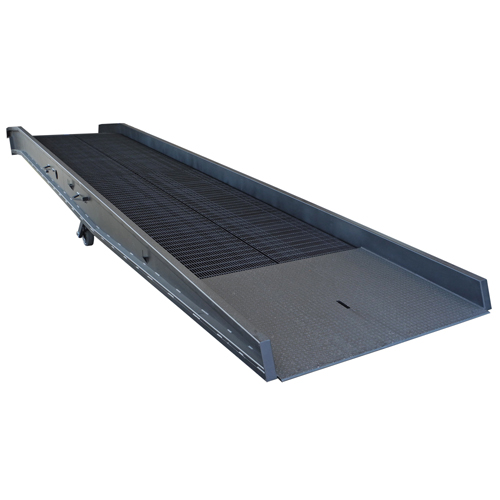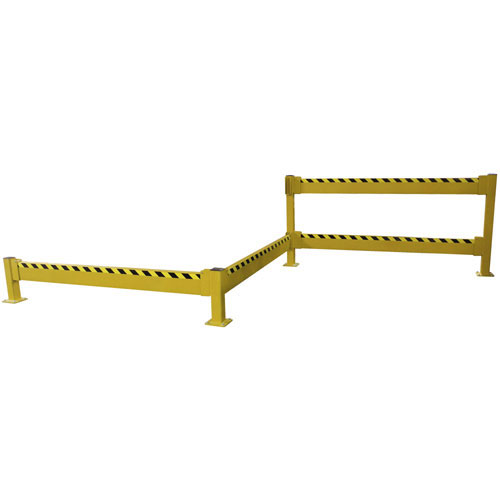We use cookies to make your experience better. To comply with the new e-Privacy directive, we need to ask for your consent to set the cookies. Learn more.
The Electronic Logging Device Rule Creates Opportunities for Shippers
The electronic logging device rule, which will be fully enforced beginning April 1, has ramifications that go far beyond the experiences of truck drivers themselves. In fact, this rule creates real opportunities — and risks — for shipper-owned distribution centers at either end of the supply chain.
ELDs intensify something that has been true about the relationship between shippers and carriers since time immemorial: Shippers that detain drivers for too long at the dock get bad reputations with carriers. There's no shortage of freight, and carriers often have the luxury of choosing which shippers they work with. So when a shipper becomes notorious for long loading and unloading times at the dock, they can expect to pay more to move their goods — or they may even find themselves blacklisted altogether.
Of course, these conditions existed long before the ELD rule went into effect in December 2017 (the Commercial Vehicle Safety Alliance granted a delay in safety citations until April 1, giving drivers more time to install these devices). But ELDs change the game by ensuring compliance with strict driving laws. It's never been more important for warehouse managers to get their docks into shape.
That's the risk to shippers that comes with ELDs. There's also a powerful benefit: By operating an efficient dock, an enterprise can establish official or unofficial "shipper of choice" status with the nation's leading carriers. That will give them a powerful edge over the competition.
Dwell Time at Docks: Understanding the Carrier's Perspective
So why, exactly, are carriers so concerned with having their drivers detained at the docks? To understand the answer, it's important to review the Federal Motor Carrier Safety Administration's Hours-of-Service regulations. Generally speaking, there are three duty limits that guide truck drivers' work:
- The Driving Window: 14 Hours.
- The Driving Limit: 11 Hours.
- The Weekly Limit: 60 Hours per 7-Day Week, 70 Hours per 8-Day Week.
Let's look at how these work together. Say a driver arrives at the truck yard at 6 a.m. This begins the driver's work "day" (it neither has to be the daytime, nor does it have to fall within a designated 24-hour period).
-
From that moment, the driver only has 14 hours during which he or she may drive. That work time will be divided between driving and non-driving tasks. The latter includes things like inspecting the vehicle, filling out paperwork, and, of course, waiting at the DC while workers load or unload freight.
-
Out of that 14-hour window, only 11 may be spent driving. Once the driver has driven for 11 hours out of the given 14-hour window, he or she must go off duty for at least 10 consecutive hours before they can legally drive again.
-
Furthermore, drivers must take breaks of at least 30 minutes at least every eight consecutive hours. So if a driver arrives at work after a 10-hour off-duty period and begins driving two hours later, the driver must take a 30-minute off-duty break after six hours of driving before resuming the journey. After that, the driver will have another five hours available to drive — and no longer, until he or she finds a place to go off-duty for another 10 hours.
-
Finally, the weekly limit states that a driver cannot log more than 60 hours of on-duty time within a given 7-day period. If the driver operates on the 8-day span, they are limited to 70 on-duty hours.
There are a few exceptions and special cases that alter these rules in minor ways, but, essentially, these are the limits that ELDs track without flaw. And because they're so strict, drivers are understandably anxious about being able to get where they're going within these limits — especially if you can't scoot the numbers a bit with a pencil.
For instance, imagine what happens if a driver runs out of on-duty time while waiting for a slow unloading crew at a dock. Legally, that driver cannot drive the truck away from the DC to find a hotel or truck stop. Legally, in fact, that driver must take 10 off-duty hours before being able to so much as pull the truck away from your dock.
Say the driver runs out of hours and, two hours later, the load is finally emptied. If the driver decides to break protocol and travel for another hour to a pre-booked hotel, and gets pulled over just before reaching that hotel, that driver could face a civil penalty of up to $2,750 for going more than three hours over the driving limit.

Figure 1. BHS Yard Ramp combines portability and durability in one versatile loading platform. Solid steel approach plates help absorb impact at the base.
The carrier that employs that driver could be liable for a fine of up to $11,000 for the same offense.
Given these strict guidelines, and the serious penalties, carriers' concerns about dock-dwell time starts to make perfect sense. The ELD rule will ensure that drivers adhere to these guidelines exactly, without any breathing room; that's why carriers are willing to opt out of business relationships with shippers who don't show a proven track record of efficiency at the dock.
This brings us to our next question: What are some quick ways DC managers can improve dock operations and make their facilities more amenable to carriers and their drivers?
Responding to Carrier Preferences at Loading Docks
There are two broader goals that will keep shippers within their preferred carriers' good graces: They must keep their docks moving efficiently and productively (and, it hopefully goes without saying, safely). And they must work with carriers to ensure drivers have amenities and/or quick access to bathrooms, showers, and places to park and go off-duty.
Here are a few ways to meet these goals quickly, before the April 1 date in which the government will begin to enforce the full letter of the ELD law:
-
Create lanes for drop trailers. Drop trailer programs, in which drivers pick up pre-loaded trailers at the point of origin, can reduce loading dwell time to virtually nil. The problem is, few DCs have the extra dock space to leave filled trailers for hours at a time.
-
Drop-trailer lanes can double as on-site parking spaces. When carriers discuss the challenges of ELDs with shippers, they frequently ask the same question: Can drivers park on your lots? And if not, can you work with us to find easy-access parking spaces?
-
Grant 24/7 access to driver amenities. Most DCs already have driver lounges, complete with amenities. Allowing drivers access to these spaces while they stay on premises is key to saving drivers time, which, with the advent of ELD, truly stops for no one.
-
Invest in dock safety. Speed can never come at the cost of safety, especially at loading docks, which can be quite dangerous when workers don't follow the proper protocols. Be sure to prevent drive-away, truck creep, and falls from the dock. Install Structural Barrier Rails and Bollards where appropriate.

Figure 2. Structural Barrier Rail (SBR) is a heavy duty guardrail system that’s designed to resist the force of a forklift strike. These all-steel barriers have an impact rating of 10,000 pounds at 4 miles per hour
One possible solution is to convert yard space into drop trailer lanes. Rather than loading directly from the dock, warehouse staff can load in the yard with Yard Ramps designed for safe forklift traffic.
When drivers run out of hours near or within a DC's fence, they'll need somewhere to park until their mandatory rest time is up. With drop-trailer lanes serviced by a portable Yard Ramp, DC managers can designate these spaces for truck parking when they're not full of drop trailers.
For all the concern over the implementation of the ELD rule, in a way, it simply brings into greater focus conditions that supply chain workers have faced for decades. Drivers never liked being stuck at a warehouse for hours when they could be on the road.
Now, though, carriers are looking deeply at the efficiency of the shippers they work with. Those who are able to create a better experience for drivers will gain the competitive advantage, while those who remain slow at the docks might find themselves on the wrong side of the driver shortage.
Like it or hate it, the electronic logging device rule is the new normal, and it's up to each shipper to leverage that to their advantage.
References:
Cassidy, William. "ELD enforcement to be 'phased in' through April 2018." JOC. Journal of Commerce, 28 Aug. 2017. Web. 14 Dec. 2017.
Cassidy, William. "Tension rises among US truckers, shippers over electronic logs." JOC. Journal of Commerce, 1 Jun. 2017. Web. 14 Dec. 2017.
"ELD Implementation." FMCSA. Federal Motor Carrier Safety Administration, 14 Dec. 2017. Web. 14 Dec. 2017.
Hawes, Clarissa. "Commercial Vehicle Safety Alliance Delays ELD Sanctions Until April." Trucks. Trucks.com International, 28 Aug. 2017. Web. 14 Dec. 2017.
"New Hours-of-Service Safety Regulations to Reduce Truck Driver Fatigue Begin Today." FMCSA. Federal Motor Carrier Safety Administration, 1 Jul. 2013. Web. 14 Dec. 2017.
Rafter, Michelle. "ELD Rule Spurs Carriers, Truckers to Drop Slowpoke Shippers." Trucks. Trucks.com International, 28 Nov. 2017. Web. 14 Dec. 2017.
"Interstate Truck Driver's Guide to Hours of Service." FMCSA. Federal Motor Carrier Safety Administration, Mar. 2015. Web. 14 Dec. 2017. PDF. 14 Dec. 2017.

